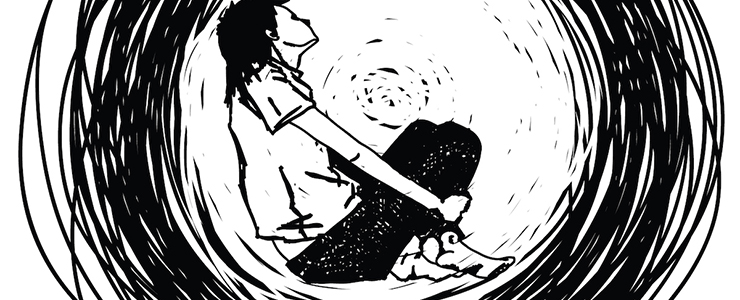by Charlene McCarty & Travis, Guest Contributors
Parenting is hard. Single parenting a child with developmental disabilities- even harder. Every child is unique and there are no “one fits all” solutions to parenting. You find yourself questioning every decision you make.
“Am I doing enough?”
“Am I doing too much?”
“What if this happens? What that doesn’t happen?”
“Will this come back to haunt me later?”
But, at the end of the day you tell yourself you’re doing the best you can, and you hope for the best. At least, that was my mind set on my journey with my son, Travis.
Travis was diagnosed with developmental disabilities when he was 4 years old. Communication and social interaction is one of his biggest challenges. He entered school with an IEP (Individual Education Plan), and it became immediately evident that he was not comfortable interacting with his peers or participating in group activities. The school and I agreed to let Travis integrate into the group at his own pace and not force interaction with his peers.
During his grade school years, the inability to manage his emotions caused frequent meltdowns if he was over-stimulated or placed in a chaotic environment. So, in what I thought was in the best interest of my son’s emotional well-being, I allowed him to be excluded in those types of situations. I would consult with his teachers before each event and come to a mutual agreement on whether Travis would benefit from participation or if it would cause undue stress.
Needless to say, he didn’t participate in many events such as field trips, assemblies, and school group activities. Was that the right decision? At the time, it felt right. Looking back, I’m not so sure.
As Travis continued on to Junior and High School, his social interactions did not improve much. I was learning more about inclusion and advocating for our child’s rights to be included, but I felt strongly that part of advocating for a child was respecting his right to make choices about his life.
I would encourage him to participate in social events, join groups or clubs, interact with his peers, but I also respected his decision of choosing not to do those things. On the few occasions that I insisted he participate in something against his will, with the hope that he would enjoy himself once he got there, did not work out that way. If he really did not want to participate, there was little we could do to change his mind.
Travis was slipping into the cracks of social exclusion unnoticed. Partly, I think, because of the type of person he is. He is a likeable, polite young man who is known by many. Everywhere he goes, people recognize and greet him and he always responds. But, that’s as far as it goes. Travis enjoys doing things with his family like going to the movies, attending plays, shopping at game stores, and eating out (a lot!). The key phrase there is “with his family.” Travis has been content to only have his family as his social network, and although that’s not a bad thing, it has allowed him to be unintentionally excluded with his peers.
Travis will turn 20 in a few short weeks, and is in the final phase of transitioning from high school to adult life. As I look back at his life and the decisions that were made along the way, I worry that the lack of a social network other than family is going to isolate him from engaging himself with his community.
The good news is, it’s never too late to change! Recognizing and acknowledging this now, we can develop a plan to help Travis be successful as be builds his future. Travis will have a team of dedicated people to help him through this process. Through the transition services at school, he is learning basic living skills, means of transportation and getting out into the community by volunteering or perhaps part time employment.
We hope to have a Person Centered Plan in the near future where all of Travis’s network (teachers and family, etc..) will be invited to brainstorm ideas and help build a better vision of who Travis is and what kind of life he would like to have. There will be timelines and goals that are realistic and achievable. The desired outcome is to instill confidence in Travis and give him something “real” to work towards.
Borrowing the concept of a quote from Al Condeluci that rings true for Travis: “The more you get to know him, the more you see his value.” Travis is also going to participate in a pilot project that The Arc of Grays Harbor is conducting called “intentional inclusion” to help build his social capital by connecting him with community members involved in things that Travis is interested in.
Although Travis may never have a large capacity social network, I feel confident that it will grow substantially in his future as an adult. He is beginning to understand the importance of having a social circle other than family and is working hard to learn how to build stronger communication and social skills.





